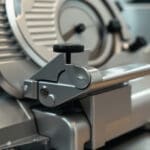The Hidden Treasures of Vintage Farm Machinery Parts
If you’re on the hunt for vintage farm machinery parts, you’re in good company. These treasures are essential for keeping your antique equipment in working order and preserving a piece of agricultural history.
Need to find vintage farm machinery parts fast? Here’s what you need to know:
- Online Marketplaces: Sites like eBay offer a wide range of vintage parts.
- Local Auctions and Estate Sales: Great for finding unique and rare components.
- Local Dealers and Repair Shops: Experts often stock or can source hard-to-find parts.
- Specialized Websites and Forums: Engaging with communities can yield excellent finds.

I’m Todd Cleppe, and with over 25 years of experience in the field of engineering and machinery, I’ve dedicated my career to the detailed craftsmanship involved in vintage farm machinery parts. From designing automated systems to improving processing equipment, I strive to deliver exceptional solutions for keeping your vintage equipment operating at its best.
Now, let’s dig deeper into the fascinating world of vintage farm machinery parts, exploring their history, types, and where you can find them.
Quick look at vintage farm machinery parts:
– farm machinery parts
– used tractor parts
– farm implements
Understanding Vintage Farm Machinery Parts
What Makes Equipment Vintage or Antique?
When it comes to vintage farm machinery parts, the terms “vintage” and “antique” often get used interchangeably, but they have distinct meanings. Generally, equipment is considered vintage if it’s between 20 to 50 years old. Antique equipment, on the other hand, is typically over 50 years old.
The lifespan of farm machinery can vary widely, but well-maintained vintage and antique equipment often outlasts newer models. This longevity is a testament to the robust engineering and craftsmanship of older machines.
Types of Parts: OEM, Aftermarket, and Custom
OEM (Original Equipment Manufacturer) parts are made by the original manufacturer of the equipment. These parts are designed to meet the exact specifications of the original equipment, ensuring perfect compatibility and performance. For instance, if you have a vintage John Deere tractor, OEM parts would be those made by John Deere specifically for that model.
Aftermarket Parts
Aftermarket parts are produced by third-party manufacturers. These parts are designed to fit and function like OEM parts but may vary in quality and price. They offer a cost-effective alternative, especially when OEM parts are hard to find. However, compatibility can sometimes be an issue, so always check specifications carefully.
Custom Parts
Custom parts are specially made to fit unique or highly specific requirements. These are often used when OEM or aftermarket parts are unavailable or when modifications are needed. Custom parts can be crafted by specialized machinists or through 3D printing technologies.
Specifications Matter
When dealing with vintage farm machinery parts, ensuring that the parts meet the original specifications is crucial. Always refer to the service manuals for your equipment, which provide detailed specifications and compatibility information. This helps avoid issues like poor fit or suboptimal performance.

Understanding these differences will help you make informed decisions when sourcing parts for your vintage farm machinery. Next, we will explore the best places to find these essential components.
Where to Find Vintage Farm Machinery Parts
Finding vintage farm machinery parts can be a bit of a treasure hunt, but several reliable sources can make the search easier.
Online Stores and Marketplaces
eBay is a popular destination for vintage parts. With thousands of listings, you can find everything from wheel bearings to engine parts. For example, a recent search showed items like vintage Ford and Massey Ferguson tractor wheel bearings and even a Minneapolis Moline PTO shield.
Specialized websites also offer a wide range of vintage parts. These sites focus on agricultural equipment and often provide detailed descriptions and compatibility information. Forums dedicated to vintage machinery can be invaluable, too. They offer not only parts but also advice from other enthusiasts who have faced similar challenges.
Auctions and Estate Sales
Local auctions and estate sales are excellent places to find vintage farm machinery parts. Farm auctions often feature equipment and parts from retired farmers or estates, providing a good selection of well-maintained items. Estate sales are another great option; they often include vintage equipment that families are looking to sell.
Keep an eye on auction listings and estate sale announcements in your local newspapers or community boards. Attending these events can yield rare finds and often at lower prices than online marketplaces.
Local Dealers and Repair Shops
Local dealers and repair shops are another valuable resource. Many dealers specialize in vintage equipment and have extensive networks to source hard-to-find parts. Repair shops often have a stock of used parts or can help you identify what you need and where to find it.
Community networks can also be helpful. Joining local farming groups or vintage machinery clubs can connect you with people who have parts to sell or trade. These networks can also provide recommendations for trusted dealers and repair shops.
By leveraging these resources, you can find the vintage farm machinery parts you need to keep your equipment running smoothly. Next, we’ll dive into some tips for maintaining and restoring your vintage equipment.
Tips for Maintaining and Restoring Vintage Equipment
Keeping your vintage farm machinery in top shape requires regular maintenance and careful restoration. Here are some essential tips to help you along the way.
Regular Maintenance Practices
Cleaning: Dirt and grime can cause significant wear and tear on your machinery. Regularly clean all parts, especially moving components, to prevent buildup.
Lubrication: Lubricate all moving parts to reduce friction and wear. This includes gears, bearings, and chains. Use the manufacturer-recommended lubricants for the best results.
Inspection: Regularly inspect your equipment for signs of wear or damage. Look for cracks, rust, and worn-out parts. Early detection can prevent costly repairs down the line.
Finding Compatible Parts
Compatibility: When searching for replacement parts, ensure they are compatible with your specific make and model. Brand-specific parts are often the best choice for maintaining the integrity of your equipment.
Service Manuals: Service manuals are invaluable for identifying the correct parts and understanding how to install them. They provide detailed schematics and part numbers, making your search easier.
Brand-Specific Parts: OEM (Original Equipment Manufacturer) parts are designed to fit perfectly and maintain the machine’s original performance. For example, at Vintage Parts, you can find OEM parts for brands like John Deere and Kubota.
Common Restoration Challenges
Availability: Finding specific vintage parts can be challenging. Some parts may no longer be in production, making them rare and expensive. Be patient and persistent in your search.
Cost: Vintage parts can be costly, especially if they are rare. Budget accordingly and consider the long-term value of keeping your vintage equipment operational.
Technical Skills: Restoring vintage machinery often requires specialized skills. If you’re not confident in your abilities, seek help from professionals or join a community of enthusiasts who can offer guidance.
By following these tips, you can extend the life of your vintage farm equipment and keep it running smoothly for years to come. Next, let’s address some frequently asked questions about vintage farm machinery parts.
Frequently Asked Questions about Vintage Farm Machinery Parts
What are the differences between OEM, aftermarket, and custom parts?
OEM Parts: OEM stands for Original Equipment Manufacturer. These parts are made by the same company that built your machinery. They are designed to fit perfectly and maintain the original performance of your equipment. For example, finding OEM parts for brands like John Deere and Kubota ensures compatibility and reliability.
Aftermarket Parts: Aftermarket parts are made by third-party manufacturers. They can be a cost-effective alternative to OEM parts. However, the quality can vary, so buy from reputable suppliers. These parts might not always fit as perfectly as OEM parts, but they often come at a lower price.
Custom Parts: Custom parts are specially made to fit your machinery. These are useful when OEM or aftermarket parts are unavailable. Custom parts can be more expensive and may require a specialized manufacturer to produce them. They offer a unique solution for rare or highly specific needs.
Are parts universally compatible within each brand of equipment?
No, parts are not universally compatible within each brand. Each model of machinery has specific parts designed to fit its unique requirements.
Compatibility: Always check the compatibility of parts with your specific make and model. Using the wrong part can lead to poor performance or even damage your equipment.
Service Manuals: Service manuals are essential tools for ensuring compatibility. They provide detailed schematics and part numbers, helping you identify the right parts. Always refer to the service manual when searching for replacements.
Brand-Specific Parts: Stick to brand-specific parts whenever possible. These are designed to maintain the integrity of your equipment. For instance, using OEM parts for a John Deere tractor ensures it runs as intended.
What accessories are available for vintage equipment?
Accessories: Vintage farm machinery can be improved with various accessories. These include items like decals, logos, and emblems that restore the original look of your equipment.
Logos and Emblems: Restoring the original logos and emblems can add a touch of authenticity to your vintage machinery. These are often specific to the brand and model, so sourcing the correct ones is crucial.
OEM Accessories: OEM accessories are designed to fit perfectly and match the original design. They can include items like seat covers, toolboxes, and even vintage radios. For example, a vintage John Deere tractor might have specific OEM accessories that improve its functionality and appearance.
By understanding the differences between OEM, aftermarket, and custom parts, as well as the importance of compatibility and available accessories, you can make informed decisions when restoring and maintaining your vintage farm machinery. This knowledge ensures your equipment stays in top working condition and retains its authentic look.
Conclusion
At CFAB Global, we recognize the value of vintage farm machinery parts and their role in maintaining the longevity and productivity of your farming equipment. Our commitment goes beyond just providing parts; we offer a comprehensive machine reliability program that ensures your vintage equipment remains in peak condition.
CFAB Global’s Commitment to Vintage Equipment
Machine Reliability Program: Our program is designed to help you keep your vintage machinery running smoothly. Regular maintenance, timely part replacements, and expert support are all part of this initiative. We understand that vintage equipment requires special care and attention, and our program is custom to meet those needs.
Productivity and Lifespan: By using high-quality parts and following proper maintenance practices, you can significantly extend the lifespan of your vintage equipment. This not only saves you money in the long run but also ensures that your machinery remains productive and efficient. For instance, using OEM parts for brands like John Deere and Kubota guarantees compatibility and reliability, which are crucial for maintaining the performance of your equipment.
Why Choose CFAB Global?
Expertise and Support: Our team of experts is always ready to assist you with any questions or concerns you may have about your vintage machinery. Whether you need help finding the right part or advice on maintenance practices, we’re here to help.
Quality and Reliability: We offer only the best quality parts, ensuring that your equipment remains in top working condition. Our focus on quality means that you can trust our parts to perform as expected, every time.
Comprehensive Solutions: From sourcing rare parts to providing detailed service manuals, we offer a full range of solutions to meet your needs. Our goal is to make it as easy as possible for you to keep your vintage machinery running smoothly.
For more information on how we can help you maintain and restore your vintage farm machinery, visit our Agricultural Machinery Parts page.
In conclusion, vintage farm machinery parts are essential for keeping your equipment in top shape. With CFAB Global’s support, you can ensure that your machinery remains productive and reliable for years to come. Old is gold, and with the right care and parts, your vintage equipment can continue to serve you well.






